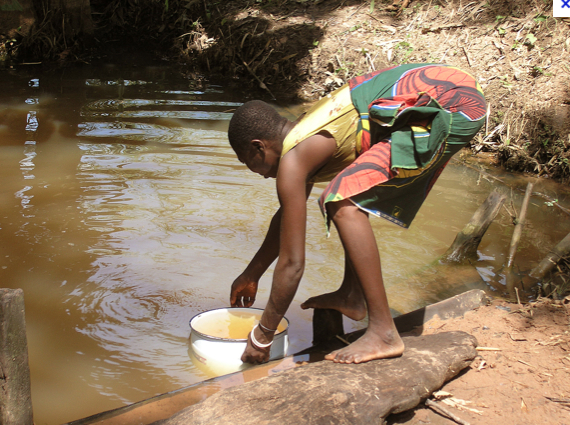Ponds

Natural ponds provide a good water resource for both domestic and agricultural water supply. However, some ponds are used for waste disposal and sewage, therefore remediation would be necessary before considering to use it for fresh water or agricultural use.
Aquaculture (also referred to as farm ponds) is also an excellent use of ponds to provide both food security and economic security, as the fish can be sold. Farm ponds can provide for a number of benefits that can help smallholders in their quest for development. They provide for water storage for crops, can be used to rear fish and other aquatic organisms like crustaceans, molluscs and plants, be integrated with other farm enterprises and improve and vary farm family diets.
Contents
Field experiences
In India and elsewhere larger dams or bunds were traditionally built to create ponds or ‘tanks’ to store water. Water seeps from these ponds into fields of crops and every so often the pond is de-silted and the silt used as a fertiliser. Although there has been a decline in these ponds, there are some places where they are being revived.
Construction, operations and maintenance
Depending on the site, there are two different types of fish ponds to choose from: diversion or barrage ponds.
Diversion ponds
Diversion ponds are constructed by bringing water from another source to the pond.
Below are the different types of diversion ponds:<br" A. Embankment ponds: The dikes of an embankment pond are built above ground level. A disadvantage of this type of pond is that you may need a pump to fill the pond.
B. Excavated ponds: An excavated pond is dug out of the soil. The disadvantage of this type is that you need a pump to drain the pond.
C. Contour ponds: Soil from digging out the pond is used to build the low dikes of the pond. The ideal site has a slight slope (1-2%) so the water supply channel can be constructed slightly above and the discharge channel slightly below the pond water level. Since natural gravity is used to fill and drain the ponds, no pump is needed.
Reference manuals, videos, and links
Acknowledgements
- Miller, James W. Farm ponds for water, fish and livelihoods. FAO, 2009.
- Climate Change and Water Resources.
